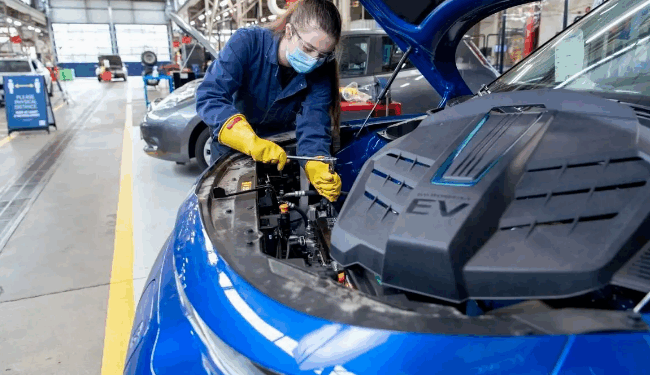The shift to electric vehicles (EVs) is gaining momentum globally, and Kampala is no exception. With high and unpredictable petrol prices, many Ugandans are looking at electric cars as a way to save money and reduce their carbon footprint. However, switching to an EV is more than just swapping a petrol tank for a battery. It involves a different financial structure, with a higher initial price tag but significantly lower running costs. For the smart buyer in Kampala, understanding these “hidden” costs and long-term savings is the key to a successful transition. For the latest local trends and driving tips, consult the experts at automag.ug.
Section 1: The Hidden Costs (The Upfront Investment)
While the promise of “fuel freedom” is exciting, the initial investment for an EV in Uganda is the highest hurdle. This is where most of the “hidden costs” are found.
1. High Purchase Price and Import Duties
The sticker price for a new EV is generally higher than a comparable petrol car. Furthermore, while the Ugandan government has offered incentives, import duties remain a significant factor for many models.
- Import Duty (The Big Tax): Since July 2024, the government re-introduced a 25% import duty on fully electric vehicles. For a popular imported model like a used Nissan Leaf, this single tax can add millions of shillings to the final landing cost in Mombasa before it even reaches Kampala.
- Local Assembly Advantage: The one major exception is locally assembled vehicles, like those from Kiira Motors, which are often exempt from VAT and other duties, making their upfront cost more competitive.
- Import Options: For drivers looking to explore sustainable mobility, EV24.africa offers import options for electric cars, expanding choices in the African market for brands like BYD, Tesla, and XPeng.
2. Home Charging Installation
The convenience of “fueling” at home is a major selling point, but setting up this convenience requires an initial outlay.
- The Hardware: A Level 2 home charger, which is necessary for a reasonably quick overnight charge, can cost around $400 to over $1,000 for the unit itself.
- The Installation: You will need a certified electrician to install a dedicated, robust circuit to handle the power load. Depending on your home’s electrical system, installation costs can add a significant amount.
3. The “Hidden” Battery Cost (Replacement and Degradation)
While EV batteries are designed to last 8–15 years, their eventual replacement represents a major expense that a petrol car owner never faces. Replacing a full battery pack is a substantial investment, often costing $5,000 to $20,000 (UGX 18.5 million to UGX 74 million). This is an unavoidable long-term cost.
4. Range Anxiety and Charging Infrastructure
A non-monetary, but significant, hurdle for Kampala drivers is the limited availability of public charging, especially when traveling long distances outside the city. The limited public network forces nearly all owners to rely on home charging. The logistical cost for inter-city travel creates “range anxiety” for long-haul drivers.
Section 2: The Savings (The Long-Term Rewards)
Once you are past the initial purchase and setup, the monthly and yearly savings begin to kick in, creating a compelling long-term financial case for the EV.
1. The Fuel Freedom: Immediate and Dramatic Savings
This is the most obvious and largest saving, as electricity is a far cheaper “fuel” than petrol.
- Cost Comparison: Charging an EV battery for a 300 km trip costs an estimated UGX 15,000 – UGX 20,000. Covering the same distance in a typical petrol car (like a Toyota Wish or a Subaru Forester, popular models found on local listings) would cost an estimated UGX 100,000 – UGX 200,000.
- The Difference: This means an EV is 5 to 10 times cheaper to run per kilometre than a petrol car, offering immediate and dramatic savings for daily commuters.
2. The New World of Maintenance: What to Expect from an EV
The electric motor’s simplicity dramatically reduces the time and money spent in the garage.
A. The Elimination List: Goodbye Engine Problems
The core of EV savings lies in the absence of the Internal Combustion Engine (ICE) and its associated problems. You can eliminate recurring expenses like:
- Engine Oil & Filter: None required (eliminates routine oil changes).
- Spark Plugs & Fuel Filters: None required (no ignition or fuel-related replacement).
- Exhaust System: None required (zero risk of catalytic converter or muffler failure).
The Result: Studies show that EV maintenance costs are typically 40% to 60% lower over the vehicle’s lifespan compared to a petrol equivalent.
B. Where the Maintenance Focus Shifts
- Brakes: EVs use regenerative braking to recapture energy, which preserves the traditional brake pads and discs. This means brake pads can last two to three times longer. You shift from replacement to inspection.
- Tyres: The added weight of the battery puts more stress on the tyres. Regular tyre rotation and maintaining correct tyre pressure are essential to prevent premature wear.
- Cooling System: The high-tech liquid-based thermal management system that protects the expensive battery is critical. In a hot climate like Kampala’s, ensuring the coolant levels are correct and the system is functioning is the most vital maintenance routine to prevent permanent battery damage.
Conclusion: The Total Cost of Ownership (TCO)
The decision to switch hinges on your driving habits and your willingness to invest upfront.
| Scenario | Upfront Cost | Running Cost (Per Month) | Payback Time |
| Petrol Car (e.g., Toyota Noah) | Low | Very High | N/A |
| EV (Urban Commuter) | High | Low | 4-6 Years |
| EV (Taxi/Ride-Hail Driver) | High | Very Low | 2-3 Years |
Note: Payback Time is the estimated period required for the cumulative fuel and maintenance savings to offset the higher initial purchase price and charger installation cost.
While the initial price remains a hurdle, the financial return for a high-mileage driver in Kampala is compelling. For those considering the transition from traditional, fuel-heavy vehicles to EVs, exploring your options is the first step. To find second-hand cars suitable for these conditions, whether petrol or electric, check out auto24.ug. For comprehensive guides on car ownership, including buying and selling tips, visit carkibanda.com.
The EV quickly moves from an expensive luxury to a smart, long-term investment that benefits both your wallet and the environment. [Read more here on making the switch from petrol to electric.]




